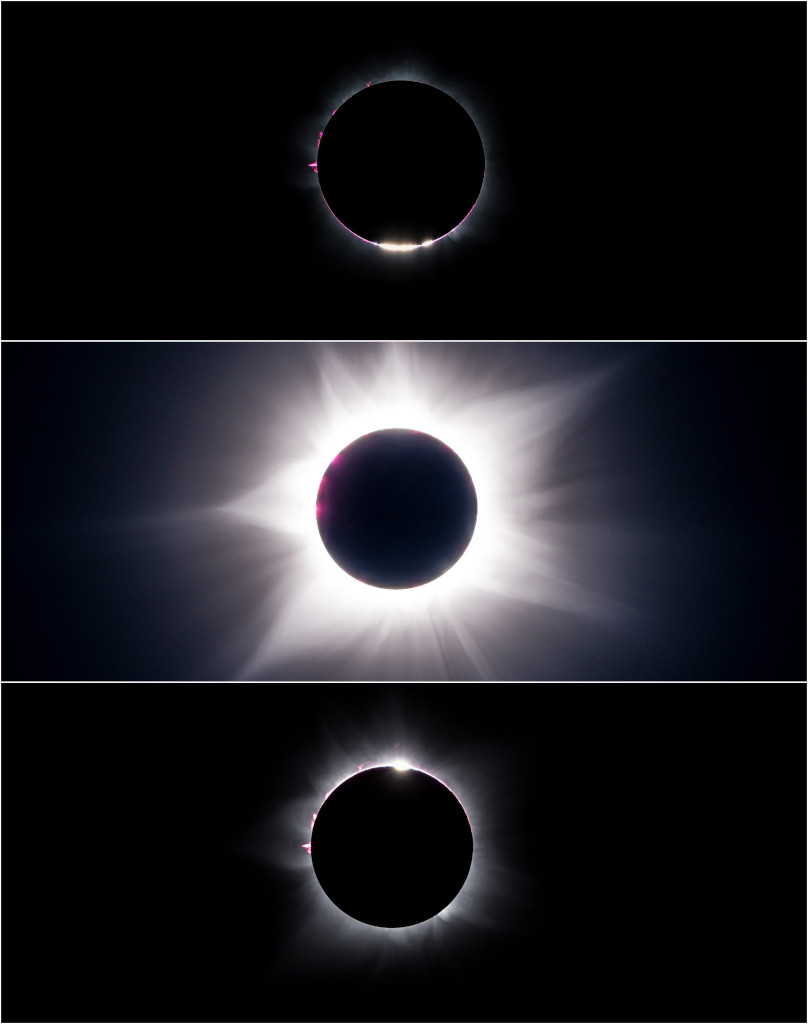Solar Eclipse from Western Australia
Discover the cosmos! Each day a different image or photograph of our fascinating universe is featured, along with a brief explanation written by a professional astronomer.
Explanation: Along a narrow path that mostly avoided landfall, the shadow of the New Moon raced across planet Earth's southern hemisphere on April 20 to create a rare annular-total or hybrid solar eclipse. A mere 62 seconds of totality could be seen though, when the dark central lunar shadow just grazed the North West Cape, a peninsula in western Australia. From top to bottom these panels capture the beginning, middle, and end of that fleeting total eclipse phase. At start and finish, solar prominences and beads of sunlight stream past the lunar limb. At mid-eclipse the central frame reveals the sight only easily visible during totality and most treasured by eclipse chasers, the magnificent corona of the active Sun. Of course eclipses tend to come in pairs. On May 5, the next Full Moon will just miss the dark inner part of Earth's shadow in a penumbral lunar eclipse.
Authors & editors:
Robert Nemiroff
(MTU) &
Jerry Bonnell (UMCP)
NASA Official: Phillip Newman
Specific rights apply.
NASA Web
Privacy Policy and Important Notices
A service of:
ASD at
NASA /
GSFC,
NASA Science Activation
& Michigan Tech. U.
When you subscribe to the blog, we will send you an e-mail when there are new updates on the site so you wouldn't miss them.

